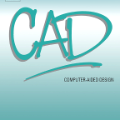This paper proposes a computational approach to form-find pin-jointed, bar structures subjected to combinations of tension and compression forces. The generated equilibrium states can meet force and geometric constraints via gradient-based optimization. We achieve this by extending the Combinatorial Equilibrium Modeling (CEM) framework in three important ways. Firstly, we introduce a new topological object, the auxiliary trail, to expand the range of structures that can be form-found with the framework. Secondly, we leverage automatic differentiation (AD) to obtain an exact value of the gradient of the sequential and iterative calculations of the CEM form-finding algorithm, instead of a numerical approximation. We finally encapsulate our research developments into an open-source design tool written in Python that is usable across different CAD platforms and operating systems. After studying four different structures -- a self-stressed planar tensegrity, a tree canopy, a curved suspension bridge, and a spiral staircase -- we show that our approach allows solving constrained form-finding problems on a diverse range of structures more efficiently than in previous work.
翻译:本文建议了一种计算方法, 来形成一个有压力和压缩力量组合的定形偶形、 条形结构。 生成的平衡状态可以通过基于梯度的优化满足力量和几何限制。 我们通过将组合平衡模型(CEM)框架扩展为三大重要方式, 实现这一点。 首先, 我们引入一个新的表层对象, 辅助路径, 以扩大与框架形成的结构范围 。 其次, 我们利用自动差异( AD) 来获取 CEM 形式调查算法的顺序和迭代计算梯度的精确值, 而不是数字近似值。 我们最终将我们的研究发展内容包含在以Python 书写的、 在不同 CAD 平台和操作系统中使用的开放源设计工具中。 我们研究了四种不同的结构, 即自制的平板质、 树冠状、 曲线悬浮桥、 螺旋悬浮桥、 螺旋型 螺旋式 螺旋式 螺旋式, 我们证明我们的方法可以比先前的工作更高效地解决各种结构上受限制的形式调查的问题。




